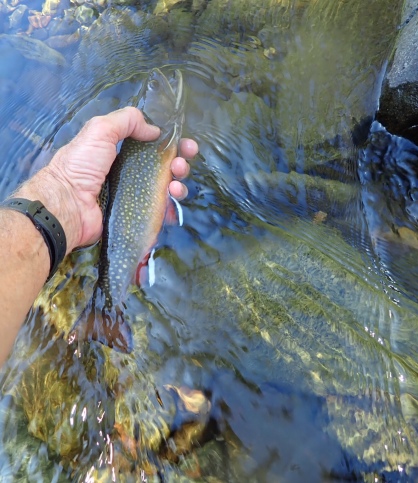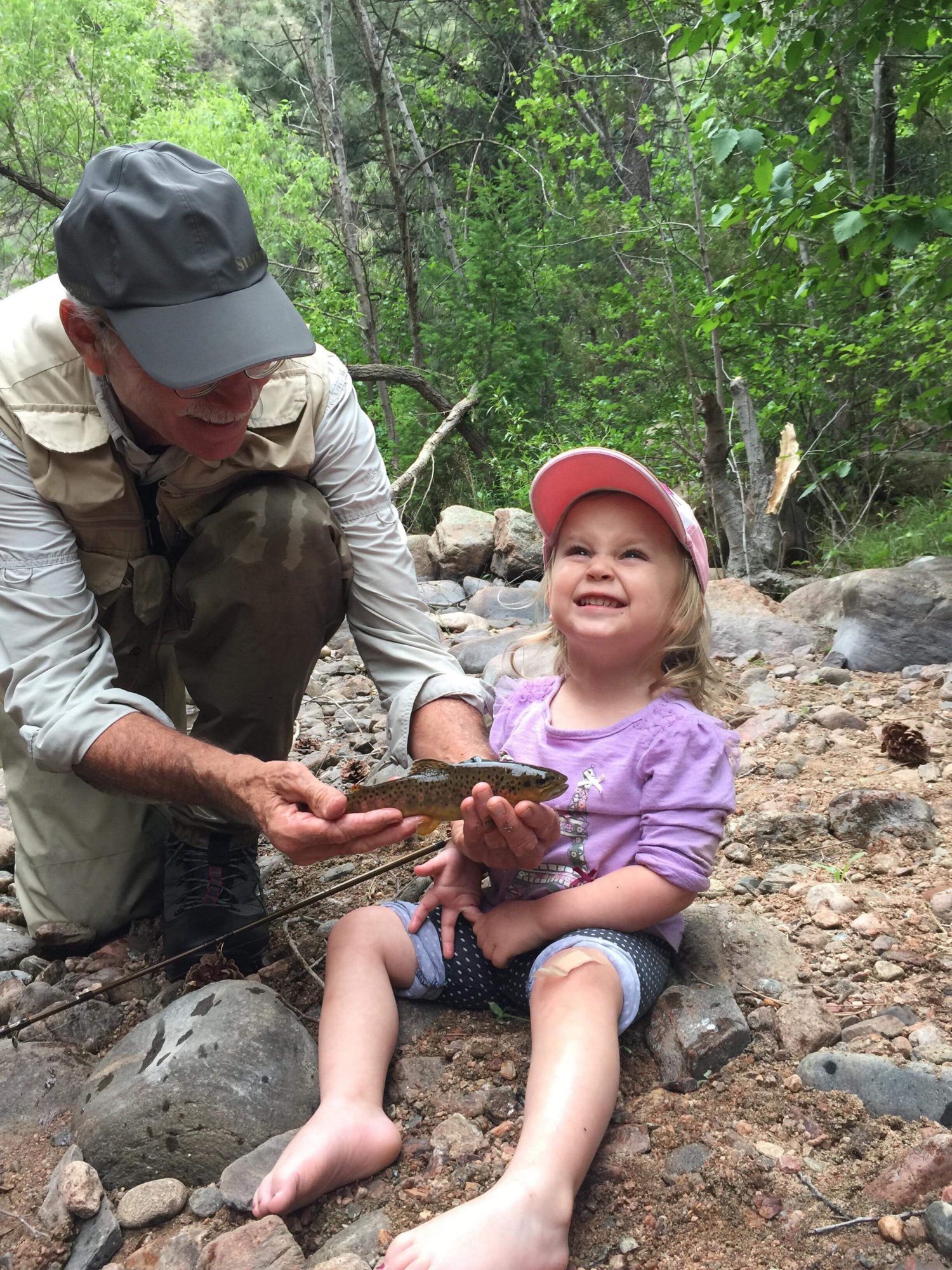For a second Mission Impossible in South Park see my May 2020 article: https://hooknfly.com/2020/06/07/on-the-road-to-riches-finding-fish-and-solitude-in-south-park/
Late September 2019
The big broad valley that is Colorado’s South Park is known mainly for two things—its eponymous TV cartoon show and great fishing on the South Platte river and its tributaries. Problem is, just over an hour away looms the booming Denver metro area with its millions of residents, not to mention Colorado’s second largest city, Colorado Springs. The result is evident every day on two Colorado fishing groups I belong to on Facebook. While anglers show photos of nice browns and rainbows on famous stretches of the South Platte like the Dream Stream and Eleven Mile Canyon, more and more they rail about the crowds and report increasing incidents of near-fisticuffs over prime fishing spots. To make matters worse, access to private waters that were formerly open to the public for a modest fee, through programs like the now-defunct county sponsored South Park Flyfishers, is shrinking.
Crowds are not my cup of tea when it comes to fishing. However, when I drive from my home near Salida to Denver through Fairplay to see my sweetheart granddaughter Aly, I see miles of water just off U.S. Highway 285 on the South Fork of the South Platte that look inviting. I fished some of this area several years ago on the 63 Ranch State Wildlife area, public water just above Antero Reservoir. A friend and I got there early in the morning one summer day and caught some nice rainbows and browns, but by 11 a.m., the hordes descended—we could see eight other anglers, several of whom had no clue that you are not supposed to jump into the water right ahead of other anglers already fishing just below who are working upstream. We flew the white flag and beat a hasty retreat.
Still, I was intrigued when I tooled down Hwy. 285 and saw few anglers upstream of Antero on the miles of public water between the main public access points located on the 63 Ranch and Knight-Imler State Wildlife Areas. (Caveat: Anglers must stay within 25 feet of the river when fishing the Knight-Imler SWA–see maps below for boundaries of both areas.)


To further whet my angling appetite, I have heard tales of huge spawning browns migrating out of Antero Reservoir up the South Fork in the fall. As I drive, I cook up a strategy in my mind: Pinpoint the several designated public access parking areas along this stretch and then avoid them like the plague. So on my next several trips I keep a hawkeye out for alternatives and discover several possible walk-in access points from service vehicle-only gates. The next step is to find a day when the wind isn’t blowing like a banshee in South Park, an all-too-often condition.
That day finally arrives in late September. I’m driving back from Denver on a Tuesday and cross the South Fork on Hwy. 285 near the Knight-Imler State Wildlife Area just before 11 a.m. In a few minutes I am at one of the previously identified service vehicle access gates, park my SUV outside the fence, and suit up for some fishing. The weather is cool, in the 50s, but will warm up under a sunny sky into the 70s, and most importantly the wind is light. I cover the short distance to the creek in about 10 minutes. My strategy is to stow my lunch under a bush near the creek, walk downstream until I begin to see too many boot marks, then work back upstream. I can see Antero in the distance, but no one parked at the public access area further downstream. All systems are go!

The water is very low, courtesy of the drought that has regripped the region after lots of winter snow and a wet May. There is no state water flow gauging station for this stretch of the South Fork, but it appears to be running maybe at five CFS when 10-15 is normal. The creek is narrow here, but there are plenty of undercut banks to shelter fish plus deep pools, especially at the bends.

Nevertheless, stealth is important given the water clarity, displaying an inviting green tinge in the deeper holes, and the low water level. I don’t see any hatches or surface activity, so go with a size 16 Royal Coachman Trude to imitate the many mini-hoppers I saw in the meadow as I walked in. Below it I drop a size 18 beadhead olive caddis larva nymph with a mylar-ribbed body and a peacock collar that has worked well in other streams this fall.

I’m using a lightweight 7 ½ foot four-weight rod with a 5X leader and 6X fluorocarbon for the dropper.
With the cool air and cold water, the going is slow at first. It’s already dipping into the 30s at night in this perennially frigid valley. Finally in the third pool I get a take on the dry. It’s a decent-sized fish, and I am surprised to see it’s a fat little brookie.

He scoots off after a photo and quick release. It will be the only brookie I see all day! As the sun beams down and temperatures warm, so does the fishing. I have steady action in the picture-perfect bend pools and deeper runs right up against the undercut banks where pinpoint drifts are a must. The fish are all brownies in the six-to-eleven inch range, fat and sassy.

Half fall for the dry and half the nymph. The bigger ones seem to prefer the nymph.
I am enjoying a relaxing morning, resigned to the fact that I probably won’t catch anything big when I get a surprise in a fast midstream run with just enough depth to hide a fish. The dry is pulled under unceremoniously by a good hit on the caddis nymph. A shimmering fish erupts from the water and does a big cartwheel before jetting for safety towards the snag-filled undercut bank. My little rod is bent double, but manages to stand the strain as I inch the fish away from danger. After a good fight he comes to the net, a stout, muscular 15-inch cuttbow!!

Now we’re cooking! With renewed enthusiasm, I continue upstream with steady action for browns. I’ve caught about twenty fish by around 1:30 p.m. when I’m back at my cooler and have a good lunch basking in the sun like a lizard.
The first stretch around the bend from my lunch spot looks very similar to the one that produced the cuttbow. It features a fast midstream current and enough depth to obscure the bottom and hold fish. I cast straight upstream in the middle of the current and keep a close eye on the bushy white Trude as it cascades down the creek. Then it’s gone, and I set the hook. I can tell immediately from his strong and frantic runs that it’s not a brownie. Soon another 15-inch cuttbow is easing into my net, a twin of the first.

I continue working upstream, and the browns get a little bigger the further I go—several pushing 13-inches.

I don’t get any more cuttbows, but also don’t see any boot marks at all! And just as I’m thinking the big browns from Antero probably don’t get up this far, I spook a 20-inch monster who was finning in the shallows. I cast frantically in front of him, but he studiously ignores my offering and disappears slowly upstream.
It’s 4:30 now, and I round a bend to see some horses and cows staring at me somewhat incredulously like they don’t see many humans up here. I have to decide whether to trek further up and fish another mile of alluring serpentine water that shows up on Google Maps. It’s been a good day—over 40 fish including a few good ones–and the wind is picking up a bit, so decide to head home.

As I get back to my lunch spot to retrieve my little cooler, I see another angler coming up from below, fishing the water I have already hit hard a few hours before. He sees me, pauses, and turns heels downstream back to the designated access area where his car is parked. Enough said about my strategy of hiking as far away as possible–upstream or downstream–from these parking areas before starting to fish. When fishing downstream from one of the designated parking areas instead of upstream like today, I do change my approach this way: I walk until boot marks are less frequent then start fishing, hopscotching my way to the next good-looking spot further down, not upstream. I have learned that if I walk too far downstream then fish upstream in the traditional mode it is highly likely some rookie sport will hop in front of me.
There are miles more water to explore on the South Fork, and I’m already thinking of a return act later in the fall further downstream to chase some of those big browns coming up from Antero. Also, next year I will try it earlier in the summer when the flows are higher. Either way, I know I really can find a little solitude along with the fish in South Park.


First time I’ve read your blog. Thanks, it really improved my morning. It’s been many years since I fished that stretch.
LikeLike
Thx Jack. I was pleasantly surprised when I fished the South Fork. Had also been a few years.
LikeLike
I love your blog.
Thank you for sharing.
Jimmy Raybon, Realtor® 941-724-9696 Berkshire Hathaway Florida Realty *2017, 2018 BHHS President’s Circle Award* http://www.jimmyraybon.com Connect with me on LinkedIn Zillow Profile Realtor.com Profile
On Mon, Oct 7, 2019 at 11:14 PM HOOK & FLY: Off -The-Beaten Path Fishing Adventures And Eclectic Musings Of An Itinerant Angler wrote:
> hooknfly posted: “Late September 2019 The big broad valley that is > Colorado’s South Park is known mainly for two things—its eponymous TV > cartoon show and great fishing on the South Platte river and its > tributaries. Problem is, just over an hour away looms the boomin” >
LikeLike
Thanks Jimmy. Glad you enjoy it.
LikeLike
Would love to e plate this area with you. Avid fly fisherman and not a rookie, I leave no trace, just weary of heading into secluded spots alone.
LikeLike
Hi William. Thx for your note. I’m tied up into October with guests and day care for my granddaughter. Then I leave for Florida where I spend the winter. Maybe we can explore the upper beats on Tarryall Creek next summer. Chris
LikeLike
Love your blog. I like you do not like to crowds. Keep up the great work.
Any suggestions for places to fish this week of 6/5 with all the runoff, high water and rain. I live in the front Range and am struggling.
Thanks
Peter J
LikeLiked by 1 person
Hi Peter. Thx for the kind words! Glad you’re enjoying the posts. I’ve been hitting beaver ponds around Salida as the rivers and creeks are blown out. Beaver Creek below Skaguay Reservoir southeast of Cripple Creek might be fishable. See the blog article I wrote a few years ago. Good luck. Let me know how you do. Chris
LikeLike